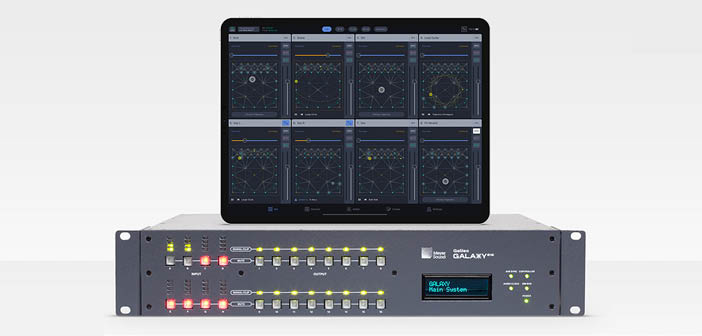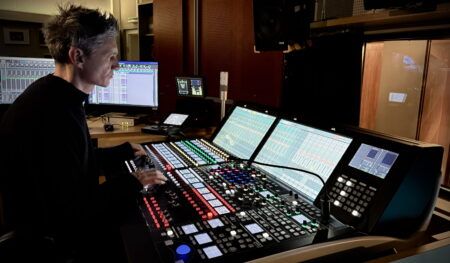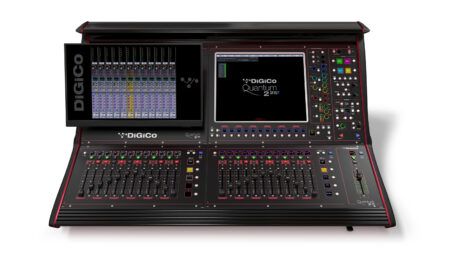Spacemap Go, a tool for spatial sound design and mixing, has been officially released by Meyer Sound. The platform is now available as a free app for the Apple iPad. It is compatible with any iPad capable of running the latest iPadOS.
Spacemap Go works with multiple Meyer Sound Galaxy Network Platform processors. It can be controlled by a single iPad or with multiple iPads to provide a larger and more varied control surface, or to allow simultaneous control by multiple users. Spacemap Go can be implemented with a free update to Galaxy firmware and Compass control software. Users with existing Galaxy inventory need only supply one or more iPads as appropriate for the application.
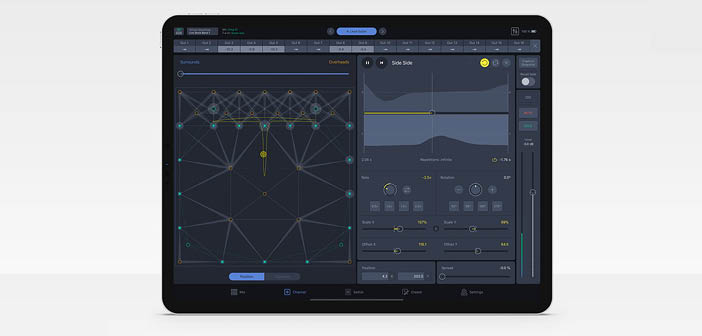
Spacemap Go is designed to offer seamless compatibility with popular sound design and show control programs such as QLab. For example, a complex sound design can be assembled using QLab in the studio, perhaps initially combining all multichannel cues into a stereo rough mix for reference. On-site, the tracks can be quickly expanded into a multichannel spatial mix using Spacemap Go’s templates for common multichannel configurations. The templates can be customised for a particular setup, while panning trajectories can be created with the touch of a finger and, if desired, captured for playback during performance. Although spatial trajectories can be created, edited and stored using the graphical interface, the detailed matrix remains immediately accessible for reference or direct data entry.
In addition to QLab, Spacemap Go can be automated by popular DAWs such as Ableton Live, Apple Logic Pro X, AVID Pro Tools, MOTU Digital Performer and Reaper, taking advantage of the iPad’s multi-touch interface for spatial automation. Galaxy now supports the RTTrPM protocol, allowing integration with real-time tracking systems such as BlackTrax.
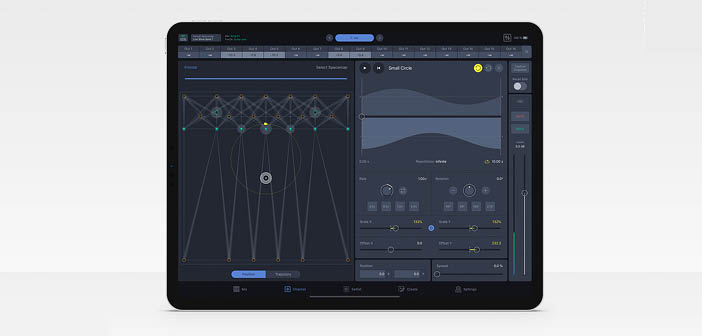
The company says systems are quickly and easily configured by Spacemap Go using any combination of Galaxy 408 or Galaxy 816 using Milan AVB, AES3 or analogue as inputs and outputs. Spacemap Systems can be configured for up to 32 inputs and as many outputs as are provided by the processors. Each Galaxy provides up to 232 matrix crosspoints. Multiple iPads can be used to control a system, providing immediate access to additional channels or allowing simultaneous access to different screen views.
“Every Galaxy processor incorporates a powerful digital summing matrix, which serves an important function in system optimisation,” said Steve Ellison, director, spatial sound, Meyer Sound. “With Spacemap Go, we have added a new creative layer over that technical layer. All the optimisation tools are still there, but now Galaxy does double duty as a powerful spatial sound mixer that can be intuitively operated in real-time, programmed to follow automated cues or recall internal snapshots with smooth transitions and dynamic movement. In terms of accessibility, scalability and intuitive ease of use, Spacemap Go is a breakthrough for sound designers and sound artists.”
“Spacemap Go gives sound designers a powerful and cost-effective spatial mixing tool that expands creative possibilities without taking them out of their normal workflow,” said Marc Chutczer, vice president of research and development at Meyer Sound. “It adapts to any application, starting with something basic like expanding a front-stage mix to seven arrays in a concert setting. Beyond that, in theatrical and themed spectacular applications, it can do much more. You can pan sounds anywhere in the room, stopping and restarting or varying the speed, all with your fingertip.”
